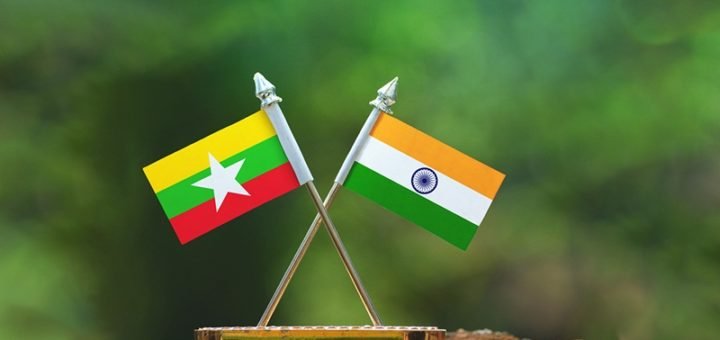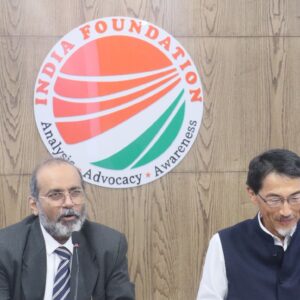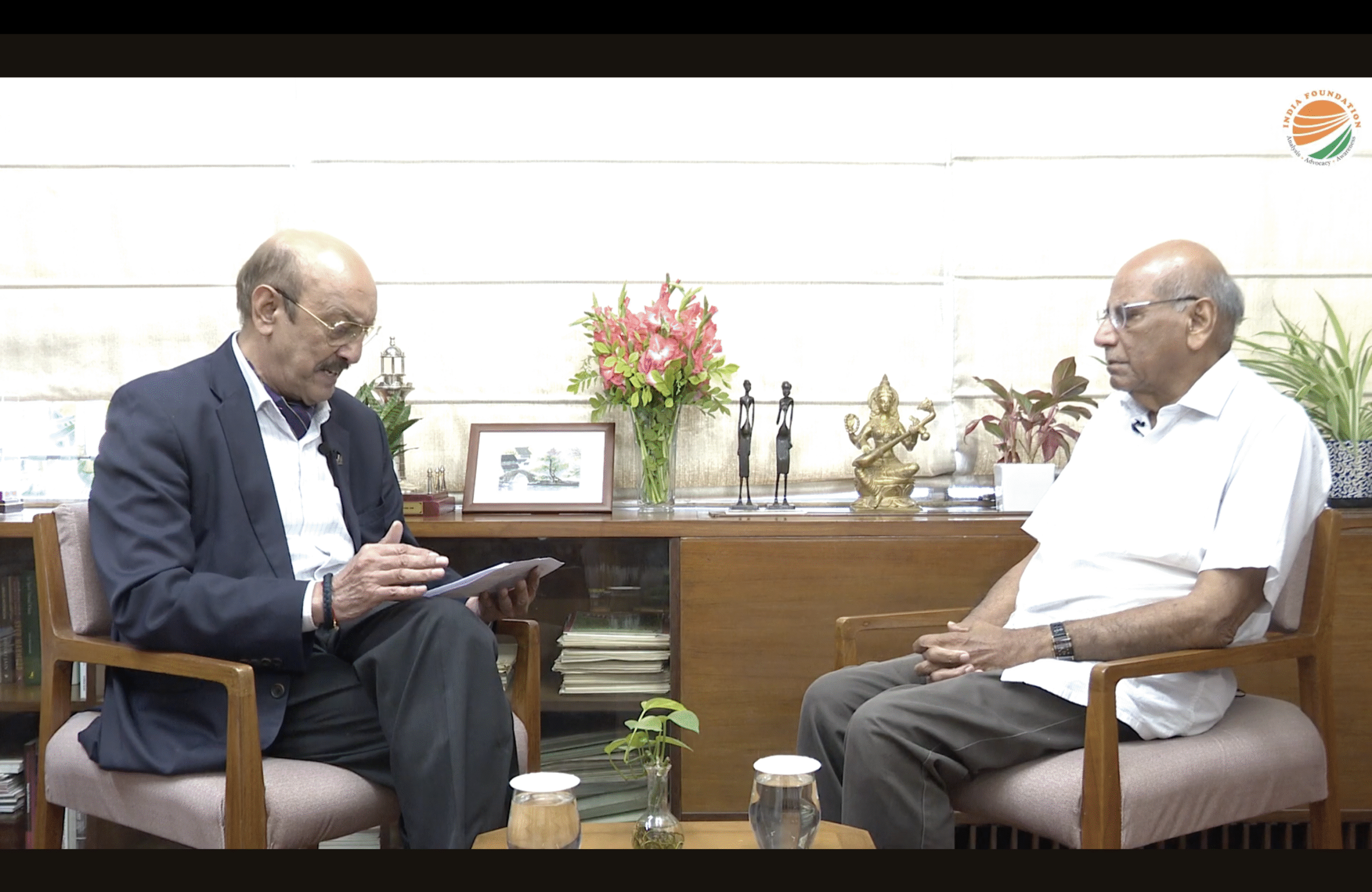India’s current “Neighbourhood First” foreign policy within the ambit of its Act East Policy puts Myanmar, among other neighbours, at the forefront. Besides, shared geopolitical, economic and security concerns and interests have factored in sustaining historical ethnic, cultural and trade links between India and Myanmar. Manipur, Mizoram Nagaland and Arunachal Pradesh in India’s North Eastern Region share a 1,643 km long international border with Myanmar, thereby making Myanmar the land bridge to South East Asia and enhancing the prospect of maritime connection in the Bay of Bengal as well as the Arabian Sea. Being the only country that intersects India’s “Act East Policy” and “Neighbourhood First Policy”, Myanmar is a critical to India’s diplomatic initiative for promoting economic, strategic and cultural relations in Asia-Pacific region[i].
The proximity and strategic positions of the two neighbour countries, reinforced by India’s Act East Policy, make the Indian Government quite enthusiastic in its endeavour to strengthen mutually beneficial relations with its eastern neighbour.[ii] While acknowledging the strategic importance of Myanmar in the regional security architecture, Mr K.M. Panikar, as far back as in 1943, stated that “The defence of Burma is in fact the defence of India, and it is India’s primary concern no less than Burma’s to see its frontiers remain inviolate. In fact, no responsibility, can be considered too heavy for India when it comes to the question of defending Burma”.[iii] The situation today is different to what existed in World War II, but India’s security concerns are heightened by any form of instability in Myanmar. As of now, India and Myanmar share a close defence relationship. India provides military training and conducts joint military exercises with Myanmar army like India-Myanmar Bilateral Military Exercise (MBAX – 2017 and IMBX 2018-19).[iv]
The Myanmar military coup (February 01, 2021) overthrowing Aung San Suu Kyi’s National League for Democracy (NLD) government, annulling the 2020 democratic election won by NLD and installing the military sponsored State Administrative Council (SAC) government, has thrown Myanmar into turmoil. A National Unity Government in-exile has been set up, and the civil disobedience movement against the military continues to face brutal suppression. The People’s Defence Force (PDF) has joined hands with Myanmar’s Ethnic Armed Organisations (EAOs) to fight for the restoration of democratic rule leading to armed conflict.
The multi-dimensional armed conflict in Myanmar has attracted international attention and has also triggered serious economic and security fallout not only in Myanmar but also for the neighbouring countries including India. The United States, the United Kingdom and the European Union have imposed targeted sanctions against the Myanmar military; the response of the Association of South East Nations (ASEAN) towards the coup in Myanmar was, however, ambivalent due to lack of consensus among the members. The coup, coupled with recession in the aftermath of COVID-19, has also hit India-Myanmar border trade.
The Myanmar Junta, in their bid to quell resistance from the PDF and EAOs, sought support from India militant groups operating in the border region, despite the fact that eliciting such support would undermine India’s interests. New Delhi continues to maintain ties with the Junta, primarily to avoid alienating the Tatmadaw.[v] India is, indeed, facing the dilemma of deepening ties with Myanmar’s military for security reasons on the one hand and engaging the National Unity Government (NUG) in-exile towards restoring democracy in the country on the other—a daunting policy challenge to New Delhi.[vi] External Affairs Minister, Dr. S. Jaishankar said in the Quad Foreign Minister’s meeting (Melbourne, 22 February) “Our dilemma is this. We (India and Myanmar) have a complicated border with insurgents operating. One way to secure that border is by working with the government, which means the military. So, despite unfortunate developments, we can’t not work with them.”[vii]
The huge influx of refugees across the India-Myanmar border has also posed security, social and healthcare challenges for both New Delhi and State Governments in India’s Northeast, particularly Mizoram and Manipur. There have been instances of conflict of interest between the Centre and the State Governments over the management of refugees. On the other hand, the governments of Mizoram and Manipur are also facing pressure from certain sections of the local population who have strong ethnic linkages with the communities across the border. However, for New Delhi, it is important to maintain good relations with the present ruling dispensation, as their support is required for the successful implementation of the counter-insurgency operations being undertaken by India on the India-Myanmar border.
Bringing in the context of India’s partnership with ASEAN which is a vibrant regional organisation of ten member countries of which Myanmar is a member, emphasises the relationship between the two. On November 12, 2022, ASEAN and India, issued a joint statement on ASEAN-India Comprehensive Strategic Partnership (CSP). They acknowledged that ASEAN-India relations have grown more robust over the last three decades and reaffirmed their commitment to establish and nurture a meaningful and substantive Partnership. Both sides agreed on maintaining ASEAN centrality in the evolving regional architecture in the Indo-Pacific region.[viii] The summit also resolved to strengthen ASEAN-India relations through strategic cooperation for peace, stability, and prosperity in Southeast Asia.
The CSP will remain critical in steering the ASEAN-India relations ahead. However, strategic relations need to be reinforced by stronger economic engagement. India’s support for ASEAN centrality in India’s Indo-Pacific Ocean Initiative, ASEAN’s appreciation of India’s ASEAN-centric Act East Policy and ASEAN also upgrading the relationship with the United States to the comprehensive strategic partnership level, all point to the Indo-Pacific region gaining the centre-stage. India’s strategic position in the Indian Ocean and as a member of the Indo-Pacific Economic Framework makes it a significant player in the region. ASEAN appreciates India’s contribution to regional peace and security, ASEAN integration, and ASEAN community-building. However, despite India’s focused, ASEAN-centric overtures, member states remain divided when it comes to engaging India and China in the economic and strategic domain. Myanmar is the bridge to Southeast Asia from India and hence cannot be ignored to any extent in the larger context of India-ASEAN relations too.
The India-Myanmar relationship is rooted in shared history, culture, and religious values. India and Myanmar share a 1,643-kilometer (1,000-mile) land border as well as a maritime boundary in the Bay of Bengal, adding more significance to the bilateral relations. Furthermore, towns by the Myanmar-India border and cities such as Yangon and Naypyidaw house a large Indian diaspora of roughly 2.5 million. With India’s active outreach to neighbouring countries with its “Neighbourhood First’ and “Act East” policies, India’s north-eastern states are connected to Southeast Asia through Myanmar. As the only ASEAN country sharing a land border with India, Myanmar is a bridge between India and ASEAN. This reenforces the strategic importance of Myanmar to India in maintaining security and stability in the wider Indo-Pacific region.
With over 1200 miles of coastline along the Bay of Bengal and the Andaman Sea, proximity to the western entrance of the Malacca Strait, and a direct linkage to the Indian Ocean, Myanmar is also important for geo-strategic reasons. In the colonial era, the Japanese imperial forces and the army of the British empire incessantly clashed over the control of Burma for the same strategic reasons. Fast forward to 2023 and the “Malacca Dilemma” persists. The People’s Republic of China considers Myanmar a strategically important country in South-East Asia for hegemonic ambitions in the region.
In January 2023, Maxar Technologies released satellite imagery revealing renewed levels of infrastructure and construction activities in Great Coco Island.[ix] The location of Coco Island gains much significance as being the largest isolated archipelago which is lying just 55 km north of Andaman and Nicobar Islands. Andaman and Nicobar Islands is also home to India’s first tri-service command. While there have been speculations of Chinese activity in the region since the late 1990’s, Maxar’s satellite imagery lends credence to this suspicion, and an article published by Chatham House in March 2023 showed satellite images of two new hangars, a new causeway, and an accommodation bloc.[x] This causes much concern, as it showed a newly expanded 7,500-foot runway and a radar station on the island.
Beijing, in its effort to establish an alternative route to the Indian Ocean is leveraging the global isolation/ostracisation of the Burmese junta in Myanmar by Western nations. Since the February 2021 coup, Myanmar has indeed returned to an era of isolation. ASEAN has drafted a Five Point Consensus to navigate the return of normalcy in Myanmar, though to not much benefit. The US and EU have imposed sanctions on Myanmar which has proven more beneficial for Beijing to increase Myanmar’s dependence on it, paving way for increased influence in the country. However, Beijing’s influence in the nation is not a new phenomenon. Even under democratic rule, Myanmar was one of the early recipients of Chinese aid under the Belt and Road Initiative. Notably, China-Myanmar cooperation was not limited to civilian infrastructure development. Military and strategic installations such as the construction of the SIGINT station had begun in the 1990s with the placing of an antenna tower, radar sites and other electronic facilities forming a comprehensive SIGINT collection facility.[xi] Beijing has slowly and steadily established more facilities not just in the Great Coco Island but also SIGINT listening stations in the Andaman Sea at Manaung, Hainggyi, and Zadetkyi in Myanmar.[xii] Through the China-Myanmar Economic Corridor (CMEC), part of the (BRI), Beijing has invested in infrastructure projects such as roads, bridges and railway lines providing it an access to the Indian Ocean without having to go through the Malacca Strait.
Cognisant of the strategic significance of these developments, the Indian government has raised the issue bilaterally, with Myanmar. The Indian Ministry of External Affairs (MEA) official spokesperson, Arindam Bagchi, referring to this development, commented “India will take all necessary steps to safeguard its interests. The Government keeps a constant watch on all developments having a bearing on India’s security.”[xiii]
New construction activities on the island, not limited to naval ports and the possibility of a new airbase pose challenges to India. Military leaders have long warned of the possibility of Chinese infrastructure development on the island. As way back as 2005, the Junta leaders invited Indian defence officials to tour the island to allay their concerns of Chinese involvement. Post the visit, the then Chief of Indian Naval Staff, Admiral Arun Prakash set aside concerns of Chinese involvement in Coco Island and stated that there was no military installation of any kind on the island.
Concerns however persist as Chinese presence in the Coco Island chain could potentially provide the Chinese, direct access to the Indian Ocean giving them an enormous advantage over its major competitors, particularly India. If this comes to fruition, Beijing will be able to control both the eastern part of Malacca Strait via the artificial islands in the South China Sea and the western part through China Machinery Engineering Corporation (CMEC) and Coco Islands in Myanmar. For nations that seek to maintain a safe and secure Indo-Pacific region, such as India, Australia, Japan and the US, China’s infrastructure development on Coco islands adds a new dimension to the challenge.
Despite the US and Europe unleashing sanctions on Myanmar, New Delhi, besides Moscow and Beijing, have maintained diplomatic relations with the military government. Chinese infrastructure development on the Coco islands brings into question the benefits of that engagement to New Delhi. While that engagement certainly gives New Delhi the opportunity to take up this issue with the Naypyidaw, New Delhi may not be in a position to dangle carrots in the form of infrastructure investments and billions in lines of credit as Beijing has in the past. The military leadership in Naypyidaw has primarily counted on neighbouring states- India and China and Russia to run the economy. It should rethink its support for Chinese infrastructure development on the islands given that it cannot afford to lose more partners.
For New Delhi, Myanmar has proven to be a concern since its independence from colonial rule. Separatist groups of India’s North-eastern states have found refuge in western Myanmar and the unstable governance in Naypyidaw has created an ecosystem for various rebel groups of both Burmese and Indian origin to pursue decade-long violent separatist activities across the border. Over the last decade, New Delhi has successfully rehabilitated several separatist groups into civilian life in its north-eastern states. However, the same cannot be said for its eastern neighbour. While India has stymied separatist activity in its north-eastern states, through the militarisation of the Great Coco Islands, a new front may have opened in a much more geo-strategic and vulnerable region – the Indian Ocean.
Author Brief Bio: Dr. Shristi Pukhrem is a Senior Research Fellow at India Foundation. She has been awarded Doctorate from the Centre of South Asian Studies, School of International Studies, Jawaharlal Nehru University, New Delhi. Earlier she has worked as a Researcher at the Institute for Defence Studies and Analysis (IDSA), New Delhi. Her areas of research and interest cover India-ASEAN relations, India and Southeast Asia relations, Act-East Policy. She has served as a Visiting Scholar at the ASEAN Studies Centre, Chulalongkorn University, Bangkok and she was also selected as one of the Canberra Fellows in March 2019 during which she participated in the Trilateral Canberra Fellowship held in Australia.
References:
[1] Mahaseth, Harsh (2020) Understanding the India-Myanmar relations. Modern Diplomacy. pp. 1-5.
[1] Rajya Sabha, Question No.3692 Neighbourhood First Policy, 25 July.
[1] KM Panikkar, The Future of India and South-East Asia: An Indian View, The Macmillan Company, 1943, p. 40.
[1] Mahaseth, Harsh (2020) Understanding the India-Myanmar relations. Modern Diplomacy. pp. 1-5.
[1] Saket Ambarkhane; Sanjay Valentine Gathia, “Over a Year Later, Myanmar’s Military Coup Threatens India’s National Security”, May 10, 2022. https://www.usip.org/publications/2022/05/over-year-later-myanmars-military-coup-threatens-indias-national-security
[1] Udai Bhanu Singh, “Post Coup Myanmar and India’s Response”, May 21, 2021. https://www.idsa.in/idsacomments/post-coup-myanmar-indias-response-ubsingh-210521
[1] Basu, Nayanima. “Quad ‘concerned’ over Myanmar, but India opposes sanctions, more focussed on border issues”, 11 February, 2022. https://theprint.in/diplomacy/quad-concerned-over-myanmar-but-india-opposes-sanctions-more-focussed-on-border-issues/828159/
[1] Joint Statement on ASEAN-India Comprehensive Strategic Partnership”, November 12, 2022. https://www.mea.gov.in/bilateral-documents.htm?dtl/35876/Joint+Statement+on+ASEANIndia+Comprehensive+Strategic+Partnership
[1] Damien Symon and John Pollock, “Is Myanmar building a spy base on Great Coco Island”, 31 March, 2023. https://www.chathamhouse.org/publications/the-world-today/2023-04/myanmar-building-spy-base-great-coco-island
[1] ibid
[1] https://www.indiablooms.com/news-details/M/82475/china-s-sigint-facilities-in-cocos-islands-a-threat-to-india.html
[1] Goswami, Namrata, “China’s Second Coast: Implications for Northeast India”, June 19, 2014. https://idsa.in/idsacomments/ChinasSecondCoast_ngoswami_190614
[1] https://www.youtube.com/watch?v=ZIuwel-p_Q8&t=149s




